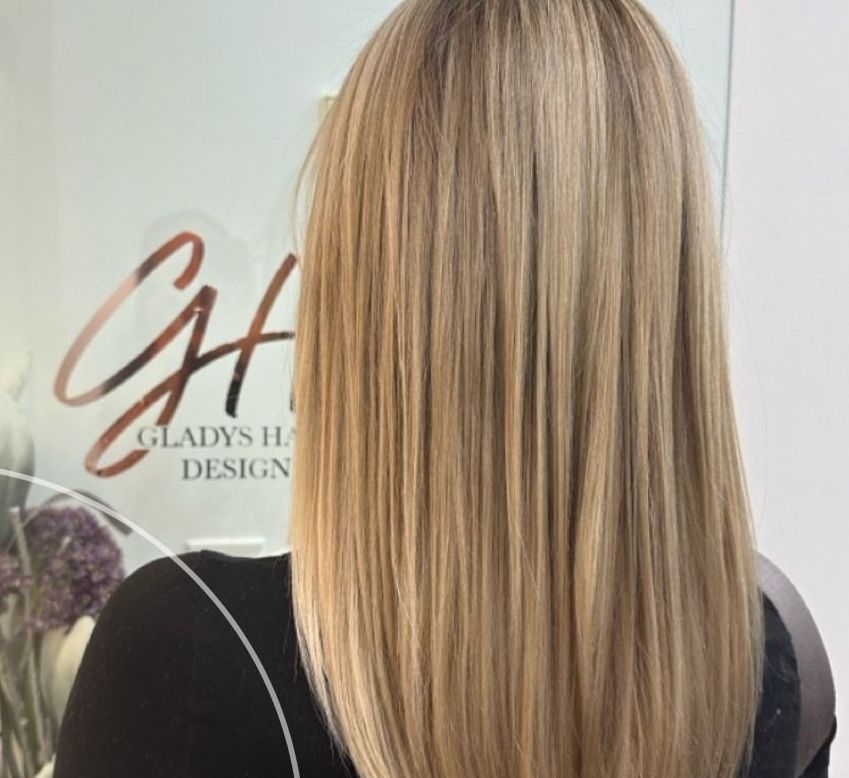How to Protect Your Hair from the Sun, Salt, and Chlorine | Expert Tips & Product Recommendations
Maintaining healthy, vibrant hair can be a challenge when environmental factors like the sun, saltwater, and chlorine come into play.
In this guide, we’ll explore the science behind the damage, share effective pre- and post-exposure protection strategies, and offer tailored product recommendations to help you keep your hair looking its best.
Looking to revitalize your hair after too much chlorine, salt, and sun? Treat your locks to a nourishing transformation at Glady's Hair Designs.
Book your appointment today and bring your hair back to life with professional care that makes a difference!
Understanding the Damage
Sun Exposure
- Impact on Hair:
UV rays from the sun break down keratin, weaken the hair structure, and cause dryness, leading to brittle, frizzy hair. Prolonged exposure can also fade color, leaving colored hair dull.
Saltwater
- Impact on Hair:
Salt draws moisture from your hair, leaving it dry, tangled, and prone to breakage. The salt can also cause the hair cuticle to lift, resulting in a rough texture and dull appearance.
Chlorine
- Impact on Hair:
Chlorine, commonly found in swimming pools, strips your hair of natural oils. This results in dryness, increased frizz, and can even give lighter hair a greenish tint due to chemical reactions with proteins.
Pre-Exposure Protection
Taking steps before you swim or spend extended time outdoors can significantly reduce damage:
Wet Your Hair
- Why It Works:
Rinse your hair with clean water before swimming. Wet hair is less likely to absorb salt and chlorine compared to dry hair.
Apply Protective Products
- Leave-In Conditioners and UV Sprays:
Use a leave-in conditioner or a UV-protectant spray to create a barrier. Look for products specifically designed to protect hair from environmental stressors.
Wear a Swim Cap
- Maximum Protection:
A swim cap can minimize your hair’s exposure to salt and chlorine. Choose a cap that fits snugly to ensure minimal water contact.
Post-Exposure Care
Caring for your hair after exposure is just as important as protecting it beforehand:
Rinse Thoroughly
- Immediate Action:
As soon as you finish swimming, rinse your hair with fresh water to wash away salt and chlorine residues.
Deep Conditioning Treatments
- Restore Moisture:
Use a nourishing deep conditioning treatment or hair mask once a week. This helps restore lost moisture and repair damage.
Use Color-Safe Products
- Protect Colored Hair:
If your hair is colored, choose shampoos and conditioners designed for color-treated hair. These products help prevent fading and maintain vibrancy.
Product Recommendations
Here are some product suggestions that can help shield and repair your hair:
Protective Sprays and Conditioners
- UV-Protectant Spray:
Look for sprays that offer broad-spectrum protection. They shield your hair from harmful UV rays without weighing it down. - Leave-In Conditioners:
Use lightweight leave-in conditioners that provide moisture and form a protective barrier against environmental elements.
Deep Conditioning Masks
- Hydrating Hair Masks:
Products enriched with natural oils like argan or coconut oil are excellent for restoring moisture and softness. - Protein Treatments:
Masks containing keratin or amino acids can help rebuild the hair’s structure, especially after prolonged sun or chlorine exposure.
Specialized Shampoos
- Color-Safe Formulas:
For those with colored hair, sulfate-free shampoos designed to maintain color integrity are a must. - Clarifying Shampoos:
Use these sparingly to remove buildup from chlorine and salt, but follow with a rich conditioner to prevent dryness.

Additional Tips for Healthy Hair Maintenance
Avoid Excessive Heat
- Minimize Damage:
After exposing your hair to harsh elements, avoid using high heat from blow dryers or straighteners. Allow your hair to air-dry when possible.
Regular Trims
- Maintain Healthy Ends:
Regular trims help remove split ends and prevent further damage, keeping your hair looking fresh and healthy.
Protective Hairstyles
- Style for Safety:
When planning for long periods outdoors, consider protective hairstyles such as braids, buns, or ponytails. These styles help reduce direct exposure to harmful elements.
Maintain a Healthy Diet
- Internal Nourishment:
Remember that what you eat can also impact the health of your hair. A diet rich in vitamins and minerals helps strengthen your hair from the inside out.
Tailored Recommendations for Different Hair Types
For Fine or Fragile Hair
- Extra Moisture:
Fine hair can become limp if over-conditioned, so opt for lightweight, hydrating products that don’t weigh down your strands. - Gentle Handling:
Use a wide-tooth comb to detangle after rinsing, reducing breakage.
For Thick or Curly Hair
- Intensive Moisture:
Thicker, curlier hair often needs richer, more intensive treatments. Look for deep conditioning masks and leave-in creams designed specifically for curly textures. - Enhanced Protection:
Consider natural oils like coconut or argan oil to seal in moisture and add extra protection against environmental damage.
Frequently Asked Questions on Protection
Q: How often should I use a deep conditioning treatment after swimming?
A: For most hair types, using a deep conditioning mask once a week is ideal. If your hair is particularly dry or damaged, you might benefit from a treatment twice a week.
Q: Are there any specific ingredients I should look for in protective hair products?
A: Yes, ingredients like argan oil, coconut oil, keratin, and vitamins A, C, and E are excellent for protecting and repairing hair. Look for UV filters in your sprays as well.
Q: Can I rely solely on a swim cap for protection?
A: While a swim cap offers significant protection, it’s best used in combination with pre- and post-swim care routines for optimal results.
Q: What if I have colored hair?
A: Use color-safe shampoos and conditioners, and incorporate a deep conditioning treatment that caters to color-treated hair to keep your colored hair vibrant.
Conclusion
Protecting your hair from the damaging effects of the sun, salt, and chlorine is essential to maintaining its health and vibrancy. By understanding the specific ways these elements affect your hair and incorporating both preventive and restorative measures into your routine, you can keep your locks looking their best all year round.
Remember to:
- Rinse your hair thoroughly before and after swimming.
- Use protective sprays and leave-in conditioners.
- Follow up with deep conditioning treatments to restore moisture.
- Consider a swim cap and protective hairstyles for added safety.
With the right products and consistent care, you can enjoy your time outdoors without compromising the health of your hair. If you have any further questions or need personalized recommendations, don’t hesitate to ask your stylist during your next appointment.
